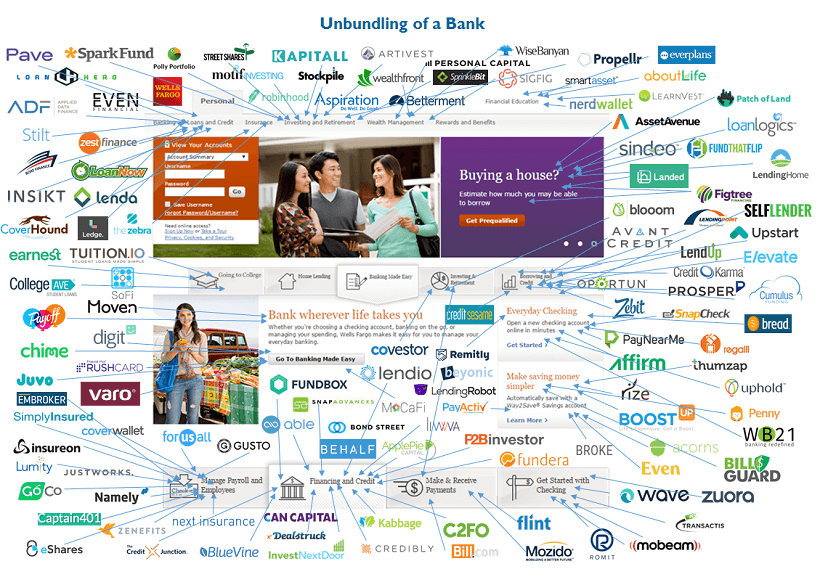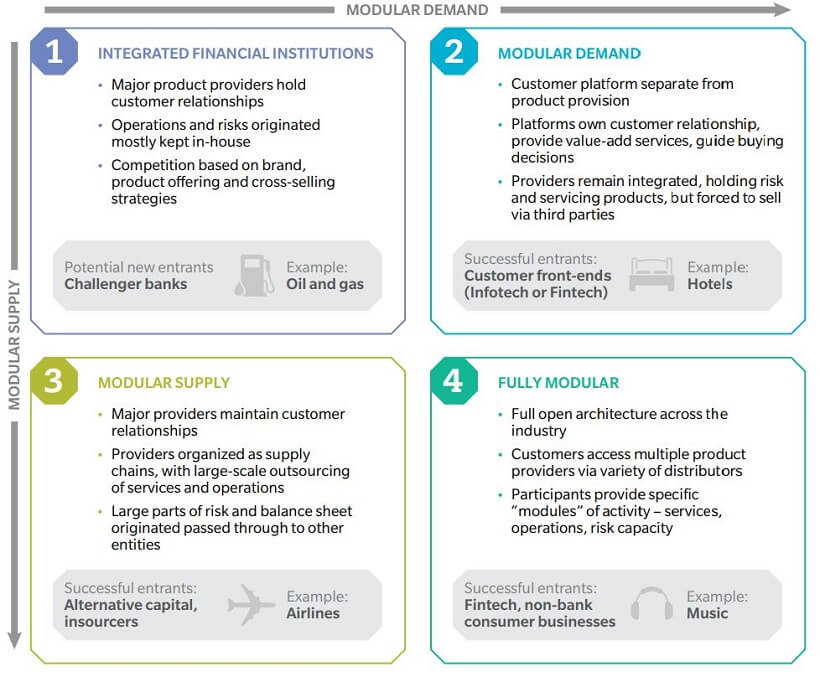The future landscape of financial services will be driven by modularization
Last week I gave a keynote to the senior leadership team of a major financial services organization at their annual strategy offsite. My brief was to provoke and stimulate, taking them out of their current frame of reference on strategy.
My session dug into key themes such as rapidly declining trust in institutions, the rise of platforms, and decentralization driven by blockchain among other factors.
The reality is that financial services is an exceptionally broad space, and our long-established financial institutions bring together a wide and diverse set of services to their customers.
Newer players including fintech startups tend to address specific offers, attracting customers by doing them better than incumbents. This is illustrated by the well-known ‘unbundling’ diagrams, as shown below.

However this unbundling of services is not the only way that the financial services space is being modularized.
A nice summary of the potential scenarios from these forces is offered by consultants Oliver Wyman in this matrix examining what happens when either or both supply and demand in financial services are modularized, taken from their report Modular Financial Services.

Source: Oliver Wyman
There is the potential for a small number of integrated financial services companies to succeed, however this position will be continuously eroded for the foreseeable future.
There are powerful forces modularizing both supply and demand, as well as arguably the underlying infrastructure that supports the provision of financial services.
If we ever do see a ‘fully modular’ financial services landscape, it will take a considerable time to evolve from where we stand today, however the forces are in process and every financial institution needs to understand how they will respond to and be positioned in a world of highly modularized value.
There will undoubtedly be value in aggregating services for the convenience of customers, based on true knowledge-based relationships.
However this does not need to be done by financial institutions, and the competition for this positioning in a more fluid world will be intense.
Understanding and responding strategically to the deep forces of modularization in financial services will be key to success in coming years.
Source: Grietje Haitsma


